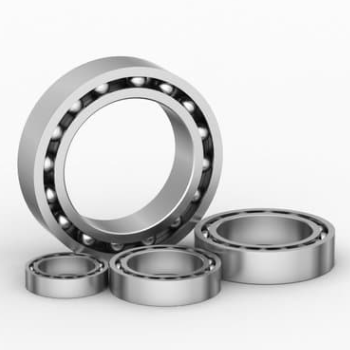What Do You Know About Bearings, And Which Are The Best?

Bearings are one of those things we all take for granted until they fail, and then we wonder how we ever managed without them. Whether it’s the wheels on your car or the bearings in your electric fan, these small but essential components make a big difference in the performance and longevity of many products. In this blog post, we will explore what bearings are, how they work, and which types are best for different applications. We will also look at some of the challenges faced by bearing manufacturers and how they are overcome. By the end of this post, you should have a better understanding of bearings and their importance in our lives.
What are bearings?
Bearings are devices that are used to support or guide moving parts of machinery. They allow smooth and precise movement while reducing friction. There are many different types of bearings, each with its own advantages and disadvantages. Some common types of bearings include ball bearings, roller bearings, and sleeve bearings.
Bearings are a type of machine element that support other moving parts and reduce friction. There are many different types of bearings, each with their own unique applications and benefits. Some of the most common types of bearings include ball bearings, roller bearings, needle bearings, and thrust bearings.
Ball bearings are the most common type of bearing and can be found in a wide variety of applications. They are composed of an inner and outer ring, with a series of balls in between. The balls rotate freely between the rings and help to reduce friction. Roller bearings are similar to ball bearings but have cylindrical rollers instead of balls. They can support higher loads than ball bearings but are not as suitable for high-speed applications. Needle bearings have thin, cylindrical rolling elements and are used in applications where space is limited. Thrust bearings can handle axial loads (loads parallel to the shaft) and are often used in automotive transmissions and pumps.
There are three main types of bearings: ball bearings, roller bearings, and thrust bearings. Ball bearings are the most common type of bearing and can handle both radial and thrust loads. Roller bearings can handle heavier loads than ball bearings, but they can only handle radial loads. Thrust bearings can only handle thrust loads, but they can handle much heavier loads than either ball or roller bearings.
There are four main types of bearings: ball bearings, roller bearings, needle bearings, and thrust bearings. Each type of bearing has its own advantages and disadvantages, so it's important to choose the right one for your application.
Ball bearings are the most common type of bearing and can handle both radial and thrust loads. They're typically used in electric motors, pumps, and conveyor belts. Roller bearings can handle higher loads than ball bearings but are more likely to fail under shock loads. Needle bearings have a high load-carrying capacity in a small space but are vulnerable to misalignment. Thrust bearings can only handle axial (thrust) loads but are very sturdy and have a low profile.
How to choose the right bearing
There are a few things to consider when choosing the right bearing for your needs. First, you need to think about what kind of load the bearing will be supporting. If it is a static load, then you can choose a less expensive bearing. However, if the load is dynamic, then you need to choose a more durable and expensive bearing. Second, you need to think about the environment in which the bearing will be used. If it will be exposed to high temperatures or corrosive materials, then you need to choose a bearing that can withstand those conditions. Finally, you need to think about the size and weight of the object that will be supported by the bearing. The bigger and heavier the object, the more expensive and durable the bearing needs to be.
The top 5 bearings manufacturers
1. SKF
2. NSK
3. NTN
4. Timken
5. Schaeffler
The benefits of using bearings
There are many benefits to using bearings. Bearings can help to reduce friction, which can lead to improved efficiency and lower operating temperatures. Additionally, bearings can help to improve the lifespan of your machinery by reducing wear and tear. When selecting bearings for your machinery, it is important to consider the load capacity, speed rating, and environment in which the bearings will be used.
There are many benefits of using bearings. They can help to reduce friction, which can lead to improved efficiency and reduced wear on components. Bearings can also help to reduce noise levels and vibration, and can be used to improve the accuracy of machinery.
There are many benefits to using bearings. Bearings can help reduce friction, which can lead to improved efficiency and reduced wear on parts. Bearings can also help to resist shock loads, which can protect equipment from damage. Additionally, bearings can help to reduce noise levels and vibration, making for a more pleasant work environment.
Conclusion
Bearings are an important part of life, and we hope this article has helped you understand a bit more about them. With so many different types on the market, it can be tough to know which bearings are best for your needs. Hopefully, this list of the best bearing brands will help you make a decision that is right for you. Thank you for reading!
There are many different types of bearings on the market, and it can be difficult to know which ones are the best for your needs. However, by doing a bit of research and understanding your options, you can make an informed decision about which type of bearing is right for you. We hope that this article has been helpful in providing you with some basic information about bearings and what to look for when choosing them. If you have any further questions, feel free to contact us or leave a comment below.

















